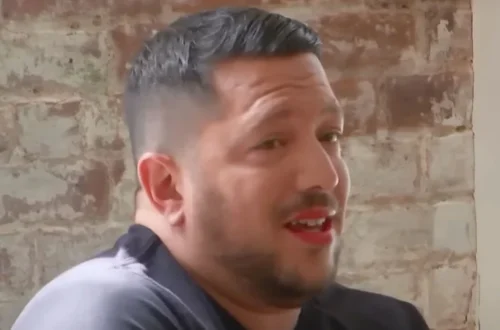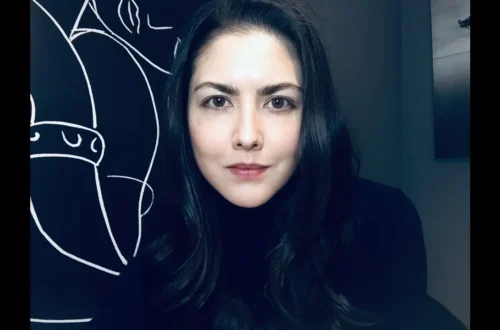Introduction
SmartSchoolBoy9 has recently become widely discussed online, especially in forums, social media, and among parents and safeguarding professionals. The concern arises from allegations that an individual (or individuals) is masquerading as a child, posting content that sexualizes or fetishizes children, using social media accounts (some possibly AI-generated or heavily edited), interacting with children online, and otherwise engaging in disturbing behaviour.
In this article, I’ll cover:
-
What is SmartSchoolBoy9 and what is claimed about it
-
The evidence available, what is verified vs speculative
-
The impact and risks
-
Responses from authorities, experts, and safeguarding organisations
-
What parents, carers, educators should know & do
-
Unanswered questions and caution about misinformation
What Is SmartSchoolBoy9?
Here’s a summary of what “SmartSchoolBoy9” refers to, based on reports from credible sources.
-
According to Ineqe Safeguarding Group / Our Safer Schools, the person behind SmartSchoolBoy9 is suspected of masquerading as a child on social media (e.g. Instagram), using multiple accounts/personas.
-
The individual is believed to use AI-generated images of children, or real videos/images but heavily edited/distorted, as well as dressing up in school uniform, often posing as a young boy (and sometimes girl) in “school-styled” content.
-
Captions and images often emphasize school uniforms, and sometimes in suggestive or unusual poses.
-
The content allegedly involves interacting with the posts of children: commenting, trying to “befriend” or connect via social media.
-
The identity of the person(s) behind the accounts is not confirmed. Some speculate that it is an older male, possibly based in England, active since around 2018.
Verified vs Speculative Claims

Because this is a controversial topic with many user-generated and social media claims, it’s important to separate what is more reliably confirmed from what is speculative or unverified.
| Confirmed / Strong Evidence | Speculative / Less Verified |
|---|---|
| A safeguarding alert has been issued by Ineqe Safeguarding Group / Our Safer Schools about someone acting inappropriately and masquerading as a child online. | Identity of SmartSchoolBoy9 is not confirmed. Age, name, location etc are speculative. |
| Copycat accounts exist; content is circulating; videos and images linked to the account(s) have been observed. | Some claims or rumours (e.g. about sexual violence, criminal convictions, extreme behaviours) are reported via social media/Youtube/Reddit, but not reliably documented. |
| Use of multiple personas (aliases), use of distorted or AI-generated imagery reported. | Some content creators claim explicit or near-explicit content; some videos reportedly “suggestive” but full content often not publicly viewable; sometimes hearsay. |
| The materials have made children anxious; schools and parents have been alerted. Safeguarding resources have been published. | Some claims about abilities to track the person, or details of their daily life (schedule, past) are largely from internet sleuths, not confirmed in official sources. |
What Are the Concerns / Risks
Given the nature of the allegations and what has been reported, many serious concerns emerge.
Child Safety & Sexualisation
Using school uniforms, posing as a child, or generating images that sexualize children is deeply problematic. It can normalize inappropriate content and encourage abuse.
Masquerading & Deception
If an adult is pretending to be a child, interacting with real children online, it’s a major safeguarding issue. Children may trust or engage without realizing.
Use of AI / Image Manipulation
AI-generated images or heavy edits can blur the line between what’s real and what’s fake. This complicates identifying abuse, tracking origins, and giving evidence.
Emotional / Psychological Impact
Reports suggest some children feel anxiety, fear of attending school, or discomfort after seeing content. Copycat behaviour (making similar videos) can spread disquiet.
Misinformation & Hoaxes
Because many claims circulate via Reddit, Instagram, TikTok, there is risk of exaggeration or false claims. Some “documentaries” or videos may sensationalize or include unverified material.
Hard to Trace / Accountability
The alleged user(s) use multiple accounts, aliases, possibly private or “alt” profiles. Some content is removed, some reappears via copycats. This makes tracking difficult.
What Authorities, Experts & Safeguarding Organisations Say
Ineqe Safeguarding Group / Our Safer Schools have issued a Safeguarding Alert. They describe the behaviour, outline risks, and give parents / carers / schools practical advice.
Schools in the UK (primary schools) are including this topic under Online Safety guidance for parents. Some schools are warning parents about this scenario.
Experts warn about the psychological harm, the risk of grooming, and the need for digital safety education. While official legal or police investigation details are not widely published, the concern is serious enough that content has been removed or accounts deactivated in some cases.
Impact on Children, Parents & Schools
Children may feel fear, confusion, discomfort seeing content that sexualizes children or that seems deceptive. Some are reported to avoid school or be fearful.
Parents and carers are being advised to monitor children’s social media, talk with them about what they see, and teach them how to block / report suspicious accounts.
Schools are including this content under their online safety curricula or parental guidance materials. Some are sending letters home, or including info on their websites.
Advice: What to Do If You’re a Parent / Caregiver / Educator
If you are responsible for children, here are practical steps you can take:
-
Talk openly
Have calm, non-judgmental conversations with children about what they see online. Ask them what they know about SmartSchoolBoy9; what they’ve seen; how they feel. It’s better they feel safe to share. -
Monitor online activity
Keep an eye on which accounts the child follows, what content appears in their feed, any DMs or interactions with strangers. Use parental controls or safe mode on social media if available. -
Teach digital safety skills
-
How to identify suspicious or fake accounts
-
How to block, report, mute social media accounts
-
Not to share personal information with strangers online
-
Critical thinking: not all content is what it seems
-
-
Use technical tools
-
Content filters / safety tools on social media
-
Use privacy settings
-
Limit screen time or supervise usage
-
-
Work with school
Let schools know if a child is anxious, frightened, or affected. See if the school has counselling or peer support. Schools often have safeguarding leads who can help. -
Report legitimate concerns
If you believe content is illegal or involves grooming, contact relevant authorities (police, child safety helplines), as well as report to the platform(s) (Instagram, TikTok, etc.). -
Avoid spreading misinformation
Avoid sharing content you’re not sure about. Sensational videos / memes may amplify fear or false claims. Always check credible sources (e.g., safeguarding organisations).
Misinformation, Sensationalism & What to Be Skeptical About
Because a lot of the discussion is happening on social media / forums / user-videos, there is risk of exaggeration or conflation. Here are things to be careful of:
-
Videos or “documentaries” may present unverified claims as fact.
-
“Copycat” accounts may confuse the origin, making it look like more people are involved than are.
-
AI-generated images or edited videos can mislead about actual content.
-
Rumours about specific identities (full name, location, criminal history) are often unconfirmed.
It’s important not to assume all you read is true, but also to take concerns seriously.
Where Things Are Unclear / Still Being Investigated
-
The true identity (age, gender, location) of the person behind SmartSchoolBoy9 is not verified by authoritative public sources.
-
Whether any legal action has been taken (or will be) is not yet clear in public records.
-
How widespread the reach is: how many children have been impacted, whether there are private messages / interactions, etc.
-
The extent to which some accounts are operated by the same person vs different people copying the style.
-
Whether platforms are doing enough (and which ones) to remove problematic content or block the accounts.
Why This Has Become a Digital Safety Concern
-
Masquerade & Role-play Abuse: pretending to be a child can be a method to groom or manipulate.
-
Use of Uniform / Costume / Imagery: school uniform is often fetishized in these contexts. The consistent visual theme raises alarm.
-
Emotional Distress: children seeing such content feel unsafe; parents are distressed.
-
Potential for Real Harm: beyond exposure, the possibility of inappropriate contact, or behaviour escalating.
Legal & Ethical Considerations
-
Laws in many countries prohibit sexual content involving minors, including images or videos that exploit or sexualize minors, even if digitally manipulated.
-
Ethical content moderation responsibilities: platforms are expected to remove disallowed content, enforce age limits, ensure reporting mechanisms.
-
The role of law enforcement: when behaviour crosses into grooming, sexual abuse, or exploitation, it must be treated as criminal.
What Platforms Are Doing / Should Do
-
Platforms (Instagram, TikTok, etc.) need to enforce stricter identity verification and content moderation.
-
Faster response to reports of abuse or sexualized content involving children.
-
Clearer, more user-friendly options for blocking / reporting.
-
Transparent communication to users about why certain content is removed or accounts banned.
-
Cooperation with law enforcement and child protection agencies.
Unintended Consequences: Copycats / Panic / Misinformation
-
Reports show copycat accounts mimicking style or content. This further confuses children/social media users about what is real
-
Panic can spread: false rumours (e.g. school lockdowns) have been shared. These can alarm parents & students unnecessarily.
-
Some content creators may produce sensational videos to get views, which can distort what is fact vs what is speculation.
Case Studies / Examples (As Reported)
Here are some reported instances or content themes:
-
Accounts dressing in school uniform, using white face paint and bright lipstick, appearing to be “a boy who goes to school” though visuals suggest adult.
-
Videos/comments suggesting “school bus,” “going to school,” or other school day frames, that are apparently staged.
-
Interactions with children’s posts: liking, commenting with phrases like “you look nice in uniform”, etc. Attempts to appear friendly.
What Parents / Children Should Know Right Now
-
Seeing content doesn’t necessarily mean direct harm happened, but it can lead to distress.
-
Children should know:
“If something online makes me uncomfortable or confused, I can talk to a trusted adult.”
-
Use privacy / safety tools: report, block, mute.
-
Avoid viewing content that is disturbing or that is known to produce anxiety.
Conclusion
SmartSchoolBoy represents a worrying phenomenon: an account (or network of accounts) that allegedly uses deception, costume/imageries (uniforms), possibly AI or manipulated images, to present as a child, and interact with children online. The allegations are serious: sexualization of children, masquerade, psychological harms.
While many details are unverified (identity, extent of harm, legal action), safeguarding organisations are treating this as significant. It’s vital that children, parents, schools, and platforms take precaution, open communication, and act responsibly.
If you’re a parent or educator, you don’t have to panic, but your awareness matters. Be proactive: know what your children see, what their social media habits are, teach them how to stay safe, and ensure platforms are held accountable.
Frequently Asked Questions (FAQs)
Is SmartSchoolBoy9 proven to be an adult pretending to be a child?
Not officially proven. Many reports and investigations suggest it, but there is no public confirmation (as of this writing) from verified law enforcement sources about identity, age, or definitive evidence.
Has SmartSchoolBoy9 been taken down?
Some accounts have been disabled or removed. However, “copycat” accounts or new ones appear, and some content persists. Safeguarding organisations note that original accounts may have been taken down but content remains reachable elsewhere.
What should I do if my child saw SmartSchoolBoy9 content and is upset?
Reassure them, listen to their feelings, avoid blaming. Remove or block the content. Talk with them about safety and what they saw. Possibly involve school counsellors or trusted adults. If needed, get professional help.
How do I report content related to SmartSchoolBoy9?
Use the reporting tools on the social media platform (Instagram, TikTok, etc.). Report as inappropriate content / child exploitation if relevant. Also contact local safeguarding authorities or child protection agencies if you believe real harm or grooming is involved.
How can society/online platforms prevent such things in the future?
Through better content moderation, quicker response to reports, stricter identity verification, transparency about how flagged content is handled, education for children & parents about online risk, cooperation between platforms and safeguarding organisations.





